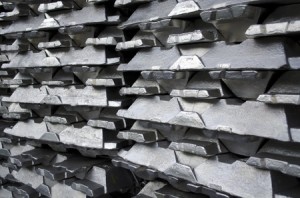 The earth’s second-most abundant metallic element is often known for its role in aluminum foil and soda cans, but aluminum deserves a great deal of credit for its impressive repertoire of applications and uses.
The earth’s second-most abundant metallic element is often known for its role in aluminum foil and soda cans, but aluminum deserves a great deal of credit for its impressive repertoire of applications and uses.
What is Aluminum?
Aluminum is a lightweight metallic element that folds, molds, and recycles rather easily. Since it takes a whopping 4,566 degrees to boil aluminum, it can certainly withstand outdoor heat. This makes it a favorite in different home construction projects like screen rooms and rain gutters.
What is Aluminum’s Story?
Aluminum was first discovered in 1807 by Sir Humphry Davy, but it wasn’t extracted for use until 1825. This extraction process was very difficult and expensive, causing aluminum to temporarily become an element more highly valued than gold as people realized it is versatile, strong, and lightweight. French Second Republic President Napoleon III even served honored guests on aluminum plates due to its scarcity at the time. By 1886, a simpler and more affordable way to harvest aluminum was discovered and allowed aluminum to be more widely utilized by the general population.
What’s Happening with Aluminum Today?
Aluminum is truly a foundation to the world as we know it, a fact that is very easy to overlook. Door knobs, window frames, kitchen utensils and appliances, furniture, and sports equipment are all created using aluminum. Even more notably, the metal is utilized in practically every construction project imaginable, from bridges and ladders to wiring and rods.
Recycling aluminum is of the utmost importance, since recycling takes only 5 percent of the energy needed to extract new aluminum from ore. Only 55 percent of aluminum drink cans are currently recycled. If more people could simply throw their soda cans into the recycling bin, our earth could save unimaginable amounts of energy when producing aluminum products.
Next time you unroll aluminum foil or ride in a Boeing 747, you can appreciate the rich history of the material making it all possible.


